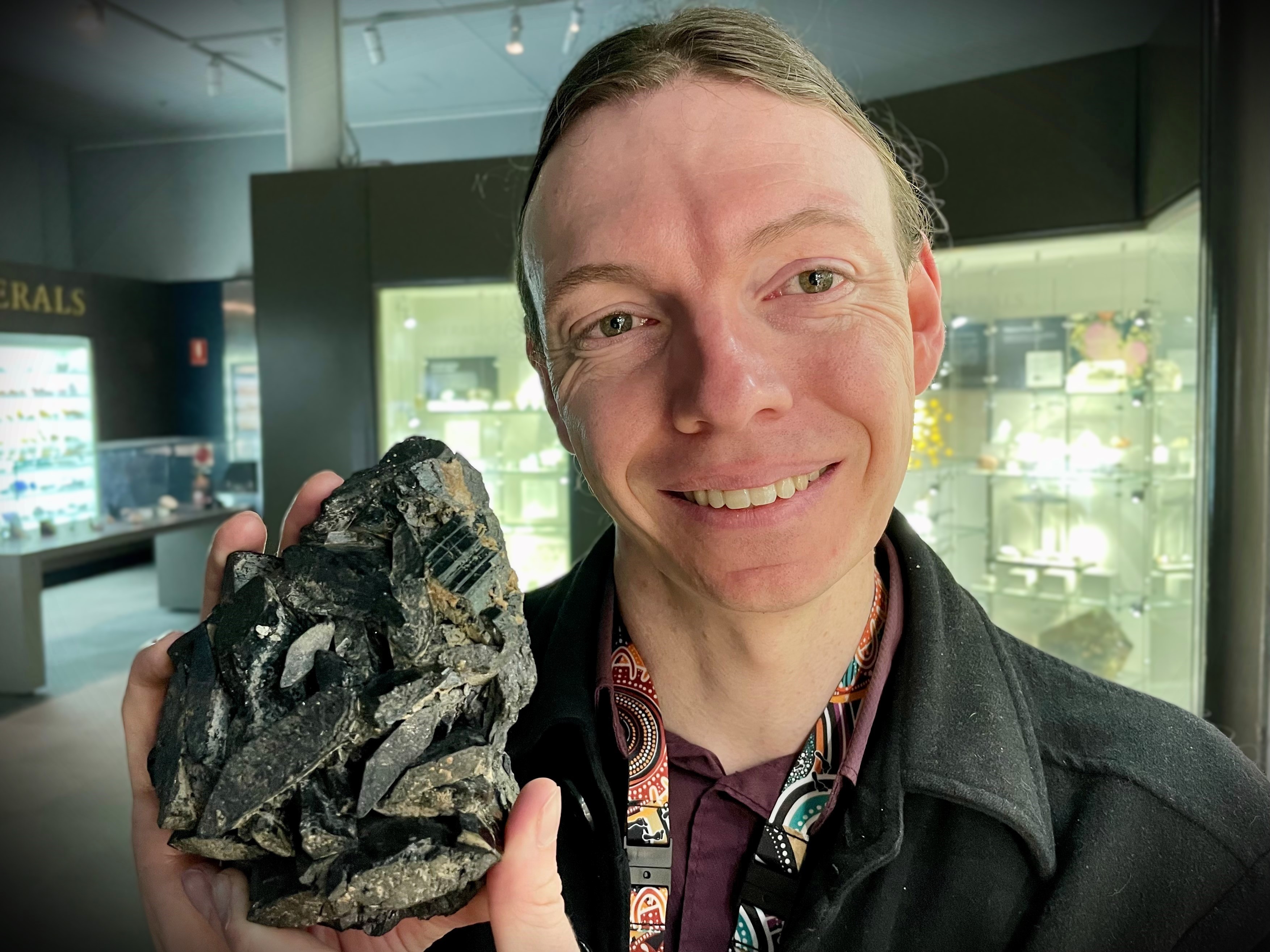
The South Australian Museum has opened a spectacular exhibit of critical minerals, including rare earth elements.
The exhibit, which includes many rare and unusual crystals, is in the Museum’s Mineral Gallery and highlights the importance of critical minerals to Australia’s future.
Minerology Assistant Collection Manager Dr Kieran Meaney (above with a crystal of Chevkinite, a rare earth element silicate from Pakistan) said critical minerals are metal and non-metal commodities essential for economic and industrial development, for which there are significant concern around the future supply.
The minerals are typically used in computing, manufacturing, green energy and energy storage, transport, telecommunications and defence technologies.
.jpg)
“Their importance arises from their unique metallurgical, electrical, and magnetic properties which are crucial for the development of emerging technologies as we move towards global decarbonisation,” Dr Meaney said.
“Many of Australia’s critical minerals are currently sourced from overseas, and there is a drive towards locating, mining, and processing them locally.
“Australia has high critical mineral potential, but more research is needed to locate economic deposits and establish processing plants.”
A feature of the exhibit is minerals from the recently acquired Vince mineral collection, which the Museum purchased from Dr David Vince last year.
He’d built up the collection over 50 years, including while working in China in the 1990s.
.jpg)
“Many of the Chinese specimens in his collection are sourced from locations that are now largely inaccessible to visitors and creates a unique opportunity for researchers to access these rare specimens for study,” Dr Meaney said.
The Vince collection totals more than 5200 separate mineral specimens, making it the single largest mineral acquisition in the Museum’s history.
It covers more than 650 different mineral species, including 40 that were not previously included in the museum’s collection.
Of particular note, are the 600 high quality Chinese specimens which cover commodities including the rare earth elements, antimony, arsenic, fluorine, beryllium, tin, and barium.
The collection also includes gold-telluride minerals from Fiji, platinum group elements from Eastern Australia, and critical mineral samples from across North and South America, Europe, greater Asia and Africa.
About 2500 of the specimens originate from the collection of mineralogist Ruth Coulsell.
Ruth was an avid mineral collector and educator, and a founding member of the Mineral Society of Victoria. After her death in 2000, much of her extensive collection was passed to Dr Vince, who cared for it until its acquisition by the Museum.
.jpg)
In addition to the purchased collection, Dr Vince and his wife, Jill Vince, donated 26 high value Chinese mineral specimens to the museum under the federal Cultural Gifts Program.
“These specimens together are valued at more than $80,000 and will serve as prized additions to the mineral collection,” Dr Meaney said. “These include outstanding crystals of aquamarine, scheelite, cassiterite, and diamond, among others.
“Many of these prized specimens are on display in the new exhibit.
“This addition to the mineral collection will make the South Australian Museum a highly valuable resource for critical minerals research in Australia for years to come.”
The museum would like to acknowledge and thank the South Australian Department for Energy and Mining for their financial support to be able to purchase and care for this incredible collection.